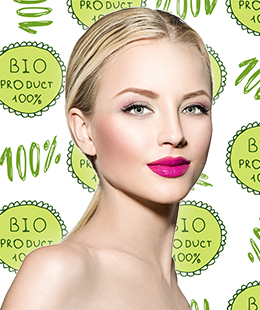No longer a niche movement, naturally positioned and nature-inspired products continue to rise as consumers increasingly demand transparency and sustainability in their beauty products. The U.S. natural personal care market is thriving, recording strong growth of nearly 10% in 2016, with forecast growth to continue along the same trajectory for 2017, according to our Natural Personal Care Global Series report.
While previously only found in upscale specialty food retailers like Whole Foods, natural beauty has gone mainstream, entering traditional retailers, such as Target and CVS, in recent years, and the category continues to expand on the retail scene throughout 2017. Department stores react as Nordstrom launches “Natural Beauty” in store outposts earlier in the year, featuring brands like Herbivore Botanicals, RMS Beauty, and Tata Harper, which advance by double and triple digits in 2016, and specialty retailer Sephora continues to expand its natural product offerings in stores and online with brands like Antonym Cosmetics, Kiehl’s, and Lilah B. in 2017.
With organic and natural beauty being a part of the larger shift in consumer awareness towards health and wellness, a movement towards clean, non-toxic ingredients is emerging, and retailers already playing in the natural beauty space take further steps to respond to this call for safer ingredients. Specialty retailers, such as Credo Beauty, Follain, and Goop, and natural food store Whole Foods have established new standards of beauty by focusing on clean, non-toxic brands over the years, and now traditional retailers are also helping define the category for consumers as a legal definition for “natural” is still lacking the market. Target announces the phasing out of select harmful ingredients by 2020, while CVS says it will be removing controversial chemicals, such as parabens and phthalates, from its store brand products by 2019 and introducing new, cleaner products to its line.
Highly focused on adapting to today’s increasingly demanding consumers, retailers will continue to help natural brands become more accessible to shoppers and remain a driving force behind the success of the market. Our upcoming Natural Personal Care: Market Analysis and Opportunities report focuses on such natural brands to determine the naturally rising stars and establish what is driving this billion-dollar natural beauty movement.
This year, we’re taking a deep look into two countries—the United States, one of the most dynamic markets, and China, which is a unique combination of local Chinese brands centered around traditional Chinese medicine—as well as an increasing number of Western brands entering the market. The natural personal care market in China has surely changed a lot since the last time we analyzed it in 2013, so it will be interesting to see how it has evolved. Expected to be published during the first quarter of 2018, Natural Personal Care: Market Analysis and Opportunities also features a bonus chapter on personal care products to explore the dynamic market for the natural and organic segments of categories like body washes, bar soaps, bath additives, liquid soaps, and antibacterial hand gels.
Written by Dana Kreutzer, Analyst, Kline Consumer Products

